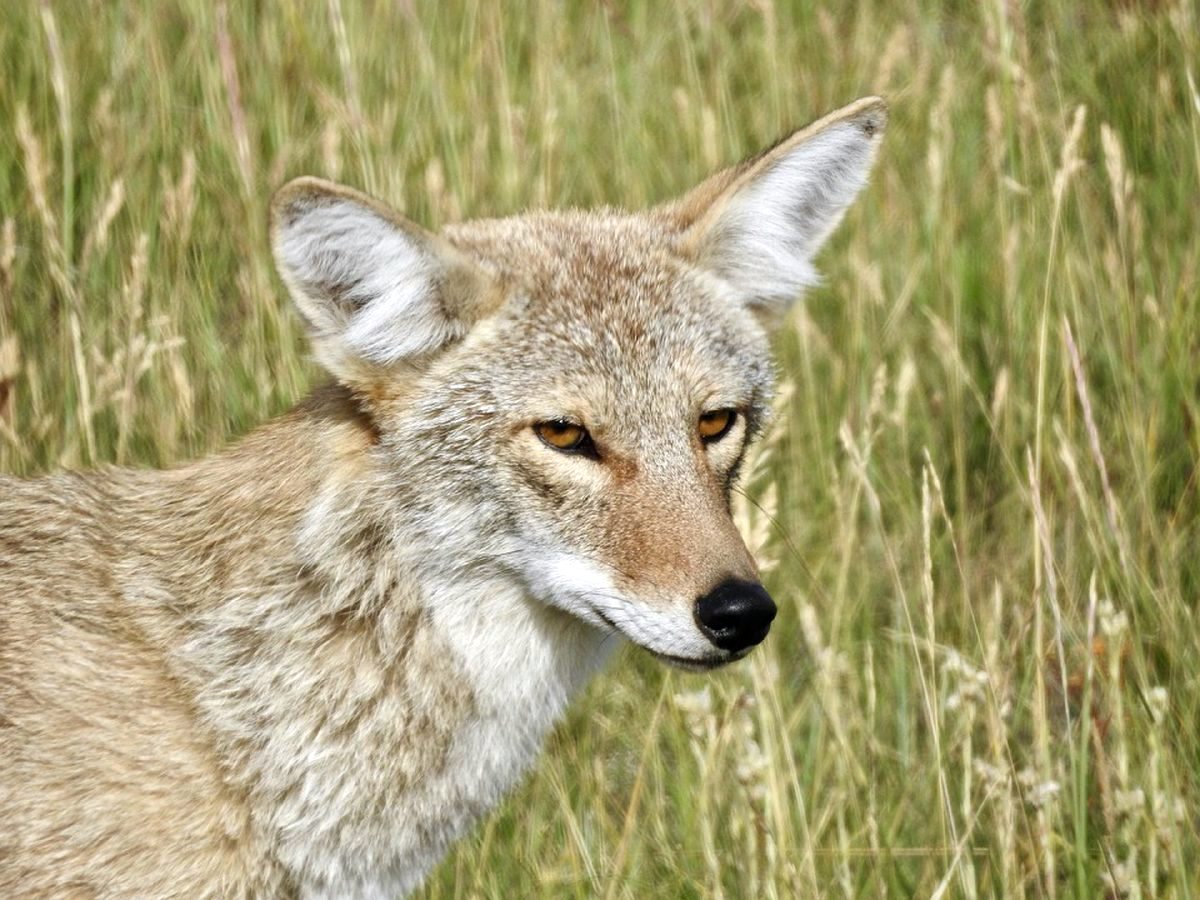
The start of the new year will likely bring more coyote sightings around Indiana.
The sightings are no cause for alarm and are a natural occurrence as they become more active during the winter.
Geriann Albers, a furbearer biologist for the Indiana Department of Natural Resources Division of Fish and Wildlife, said young coyotes are leaving their parents to find a new home, making them more visible. In January, coyotes also will be looking to breed, making them even more active. Bare vegetation also increases people’s chances of catching a glimpse.
Typically, where people are, coyotes tend to follow.
[sc:text-divider text-divider-title=”Story continues below gallery” ]
Albers said coyotes like to eat animals and plants that thrive around yards and homes. Their diet includes rabbits, mice and squirrels. They thrive around people because of the abundant food that comes with human development. Coyotes are a common member of Indiana’s urban wildlife community, as are raccoons, red foxes and opossums.
Besides small mammals, coyotes also may eat fruit, insects, poultry, livestock, deer, songbirds and sometimes game birds. They will scavenge exposed garbage or other refuse and may even kill and consume house cats and small dogs, according to IDNR.
Albers said spotting a coyote is not necessarily cause for concern. They are common everywhere in the state, even in urban areas such as downtown Indianapolis, Fort Wayne and South Bend. Coyotes are an important part of Indiana’s wildlife community and provide benefits by helping control rodent populations and cleaning up carrion.
How can you tell if what you see is a coyote?
IDNR describes the coyote as closely resembling a German Shepherd dog in height and shape, but it carries its tail below the level of its back instead of curved upward.
Coyotes average 25 pounds, ranging from 20 to 50 pounds, about half the weight of a German Shepherd.
Coyotes have pointed ears and a long, slim snout and are usually a grayish-brown or buff with reddish tinges behind the ears and muzzle, but coloration can vary from a silver-gray to black.
The tail is bushy and usually has a black tip. Their eyes are yellow, rather than brown like many domestic dogs. The belly is white, cream-colored or reddish yellow.
Albers said problems between coyotes and people are uncommon. To prevent them, be proactive by removing food and water sources and keeping pets leashed or contained.
To make yards less attractive to coyotes, clean up fallen fruit from trees or gardens, keep garbage contained, make sure pet food is not left outside and remove bird feeders if a coyote is spotted near your yard, as they could be attracted to the rodents eating the seeds.
Never intentionally feed a coyote because by doing so, the animal could lose its fear of people. Making a coyote feel unwelcome can help it maintain its natural fear of humans.
Albers said if you see a coyote, try to make it uncomfortable by yelling, waving your arms, spraying it with a hose, throwing tennis balls or small stones (not anything edible) or carrying a jar of coins or small air horn to make noise.
Never corner or chase a coyote. They should always have a clear escape path to get away. Keep pets leashed, in a kennel with a secure top or indoors to reduce the possibility of a negative interaction with any wildlife, according to IDNR.
Seymour Police Chief Bryant Lucas said no calls have come in about coyotes being spotted in the city recently.
"Coyotes will avoid town if they can and will be found mostly out in the country," Lucas said.
Jackson County Sheriff Rick Meyer said his department has not received any coyote complaints, either; however his neighbor on the west side of Seymour in Sunset Parkway had spotted one in the neighborhood.
Even though no coyotes have been officially reported lately, there appears to be some out and about in Jackson County.
Jenn Phillips of Seymour said a coyote walked along their driveway about a month ago and howled nonstop at night.
Rich Green said he sometimes hears them late at night in Buena Vista Estates about a mile south of Brownstown.
"I saw one in the bottoms on the north side of State Road 11 about a half-mile north of Rockford just last week," Green said. "In June, I moved a large female from the middle of the road that had been hit on State Road 135 just south of Brownstown. It seems that there are plenty of them around."
IDNR recently sent out a news release on coyotes because the youngsters get very vocal in the fall, said Donna Stanley, park ranger at Muscatatuck National Wildlife Refuge in Seymour.
"Coyotes are very common around here and are a part of the natural environment of Indiana," she said. "We have had no problems with coyotes on the refuge, and they do not normally bother people at all."
[sc:pullout-title pullout-title=”On the Web” ][sc:pullout-text-begin]
For detailed information about coyotes, visit in.gov/dnr/fishwild/5688.htm.
[sc:pullout-text-end]
